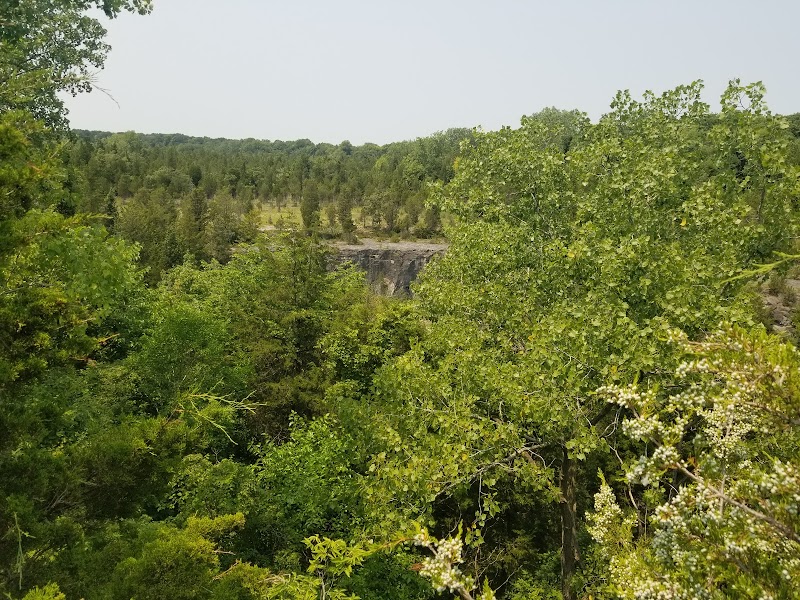
Running Detroit: The Detroit Free Press Marathon Experience
The Detroit Free Press Marathon offers a dynamic urban race blending endurance with city energy. Whether you're chasing a personal best or embracing the atmosphere, this marathon challenges runners with a practical yet inspiring course along Detroit's riverfront and iconic streets.
Choose Breathable, Cushioned Footwear
The course is mostly flat pavement — prioritize running shoes that offer durability and good shock absorption to protect your feet over 26.2 miles.
Utilize Aid Stations for Hydration
Hydrate consistently at the aid stations every two miles to maintain steady energy levels and avoid dehydration.
Plan for Variable October Weather
Late October can bring cold, windy conditions; dress in moisture-wicking layers and carry a light windbreaker to adjust quickly to changing temps.
Keep a Steady Pace Over Gentle Elevations
Small elevation gains require rhythm and endurance rather than brute strength; manage your energy output to maintain a consistent pace.
Running Detroit: The Detroit Free Press Marathon Experience
Detroit's Free Press Marathon invites runners to engage with a city fiercely alive and unapologetically itself. Spanning 26.2 miles through varied urban landscapes, this marathon offers a uniquely practical challenge—the course combines flat stretches with subtle incline shifts, predominantly on paved roads and city streets, making it accessible yet demanding enough to test endurance. Starting near downtown Detroit, the route pushes you past iconic landmarks like Comerica Park and the Renaissance Center, where the city's industrial heartbeat watches as you pass. The streets dare you forward, energized by the pulse of cheering crowds and the wind brushing across the Detroit River waterfront.
The marathon’s terrain is a straightforward canvas of asphalt and concrete, punctuated by bridges that arch over the river, momentarily expanding the scenery with sweeping views of Windsor, Ontario. Elevation gain is moderate, averaging about 150 feet throughout, requiring steady pacing rather than powerful climbs. These gentle grades test your rhythm, nudging you toward focus and resilience rather than raw strength.
Prepare for your race day with a sharp focus on hydration and footwear. The flat but extended urban course favors breathable, cushioned running shoes that absorb consecutive pounding without weighing you down. Temperature-wise, late October—when the race usually runs—delivers crisp air and chances of sudden cold snaps; layering with light windbreakers and moisture-wicking clothing is practical.
Timing your carb intake and hydration breakdown across the event is essential. Aid stations appear every two miles, stocked with water, electrolyte drinks, and gels. Utilize these checkpoints as rhythm markers, regulating energy and maintaining momentum.
The Detroit Free Press Marathon remains open to all levels. Casual runners will find the energy of the city streets infectious, while seasoned marathoners can harness the relatively flat profile to aim for personal records. For spectators, the event transforms neighborhoods into epicenters of vibrant community spirit, combining practical urban navigation with the thrill of competitive endurance.
Runners moving through this marathon tap into Detroit’s rugged character, a place that pushes back yet offers moments of encouragement—a riverfront that pushes you onward, stadiums that echo with spirited chants, and streets that connect you to a rich industrial past. This race is a call to engage with a city fiercely alive and undeniably real, rewarding every step with tangible proof of crossing both physical and mental borders.
Nearby Trips
All Adventures
Boat Charters
Water Activities
Adventures near Detroit, Michigan
Discover the unique and memorable adventures that make Detroit, Michigan special.
Frequently Asked Questions
What makes the Detroit Free Press Marathon course unique?
The marathon runs through Detroit’s urban core including the riverfront, showcasing city landmarks while offering a mostly flat course with slight elevation changes that challenge pacing over 26.2 miles.
How should I prepare for weather conditions during the marathon?
Late October can be chilly with strong winds near the river; layering with moisture-wicking fabrics and a lightweight windbreaker will help maintain comfort and prevent chills.
Are there noteworthy spots to watch or rest during the race?
Key viewpoints include the Detroit River bridges offering cross-border views and spots near Comerica Park, where community energy peaks with spectators encouraging runners.
Is the course suitable for beginners?
Yes, the course’s modest elevation and supportive atmosphere make it accessible for first-timers, though consistent training beforehand is essential.
What wildlife might I spot during the race?
While mostly urban, runners and spectators near the riverfront might catch glimpses of local birds like herons and gulls, which animate the waterfront areas.
How does the event reflect Detroit’s history?
The route passes industrial landmarks and revitalized neighborhoods, telling a story of resilience and regeneration, mirroring the grit required to complete a marathon.
Recommended Gear
Breathable Running Shoes
Provide necessary cushioning and support for prolonged road running, reducing foot fatigue.
Moisture-Wicking Running Clothes
Helps regulate body temperature and keep skin dry during fluctuating temperatures.
Light Windbreaker
Protects against chilly headwinds near the river, while remaining lightweight and packable.
Hydration Belt or Pack
Useful for runners who prefer managing their own fluids between aid stations.
Local Insights
Hidden Gems
- "Lafayette Park’s modernist architecture seen briefly near mile 20"
- "Detroit Riverwalk stretches are quieter and scenic in the early morning pre-race"
- "Eastern Market neighborhood’s murals and food vendors spring to life on race weekend"
Wildlife
- "Great Blue Herons"
- "Ring-billed Gulls"
- "Canadian Geese"
History
"Detroit’s marathon route traces paths through its transformation from automotive powerhouse to cultural hub, with stadiums, manufacturing plants, and riverfront sites as living monuments."
